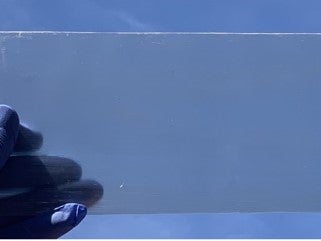Scientists have developed a method to produce a form of transparent wood that can provide an environmentally friendly alternative to glass windows.
The method involves brushing hydrogen peroxide over the surface of the wood, leaving it under a UV light to simulate natural sunlight, before immersing it in ethanol and filling the pores with a clear epoxy.
The resulting material is lighter and stronger than glass and offers much better insulation than glass.
According to researchers at the University of Maryland, the process alters a structural component of wood called lignin, which prevents light from passing through the material.
Transparent wood was previously proposed as a way to enhance the heat-retaining properties of a building, while also being biodegradable and easier to dispose of than glass.
Previous methods used to make transparent wood involved removing the lignin completely using harsh chemicals, resulting in a weaker piece of wood.
According to the researchers, the new method actually makes the wood stronger, while also greatly reducing the energy needed to produce it.
“The transparent wood is lighter and stronger than glass,” said Liangbing Hu, a professor at the Maryland Energy Innovation Institute who led the research.
‘It can be used for load-bearing windows and roofs. It can possibly be used to make a transparent house. ‘
Transparent wood is already being developed into tangible car dashboards
(Woodoo)
Transparent wood is still widely used commercially as a building material, but a form of ‘reinforced wood’ has been used to create touch-sensitive exhibits in car dashboards.
One Paris-based company claims to be the next generation of nature ‘bio-engineering’ through its tangible wooden screens.
Woodoo uses wood from regenerative forests to create translucent exhibits that are three times stronger than the original wood and more fire resistant.
